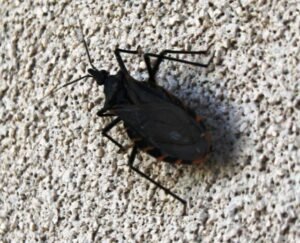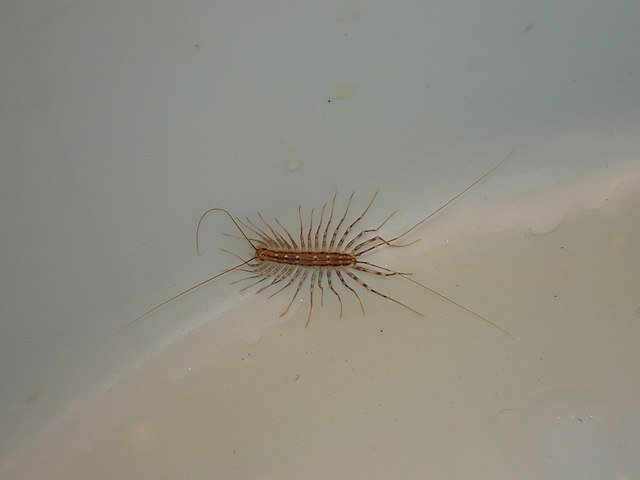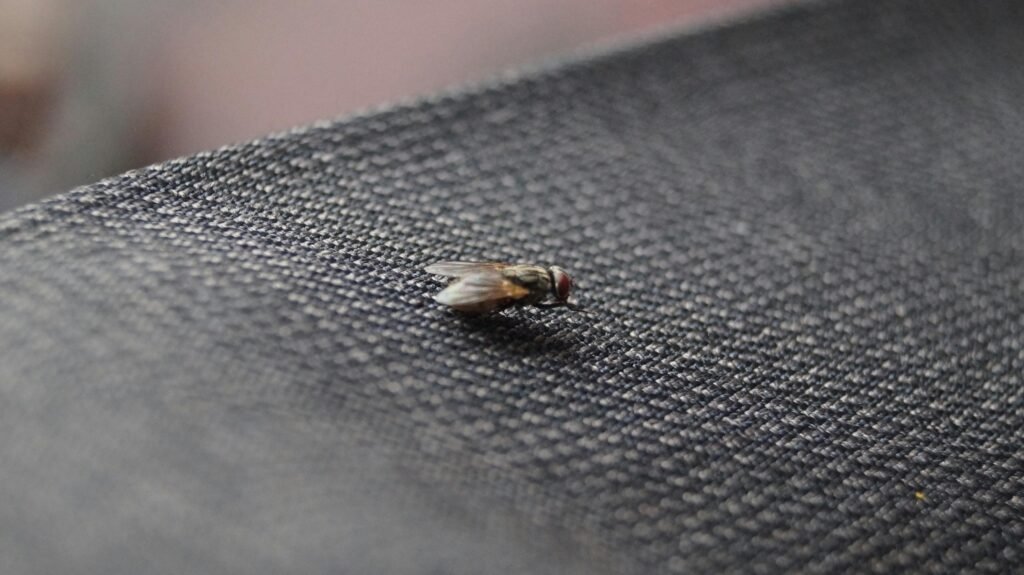Kissing Bugs: Identification, Risks, and Control Strategies
 The kissing bug (Triatominae) is a blood-feeding insect that has gained global attention due to its role in transmitting Chagas disease, a potentially life-threatening illness caused by the parasite Trypanosoma cruzi. Despite their harmless-sounding name, these insects are far from romantic—they earned the name “kissing bug” because they often bite humans near the mouth or eyes while they sleep.
The kissing bug (Triatominae) is a blood-feeding insect that has gained global attention due to its role in transmitting Chagas disease, a potentially life-threatening illness caused by the parasite Trypanosoma cruzi. Despite their harmless-sounding name, these insects are far from romantic—they earned the name “kissing bug” because they often bite humans near the mouth or eyes while they sleep.
Unlike bed bugs (Cimex lectularius), which also feed on human blood but are not known to transmit diseases, kissing bugs are a serious public health concern across the Americas. Their stealthy behavior, painful bites, and ability to carry dangerous pathogens make them one of the most important insects for both entomologists and pest management professionals to study.
This article explores the biology, risks, distribution, and control methods of kissing bugs, with insights into their historical and cultural impact.
Identification
Kissing bugs belong to the Reduviidae family, specifically the subfamily Triatominae. There are more than 130 recognized species, but only a fraction are considered significant vectors of disease.
Size: Adults range from 1.5 to 3 cm in length.
Coloration: Typically dark brown or black with orange, red, or yellow markings along the abdomen’s edges.
Body shape: Elongated, with a narrow head and a cone-shaped proboscis adapted for piercing skin and feeding on blood.
Wings: Fully developed in adults, allowing flight.
Nymphs: Wingless, resembling smaller versions of adults.
One key characteristic distinguishing them from cockroaches or assassin bugs is their habit of hiding in cracks, walls, thatched roofs, and animal nests, emerging at night to feed.
Biology and Ecology
Kissing bugs are nocturnal, emerging in the dark to seek out hosts. Their biology and feeding habits include:
Feeding behavior: They are obligate blood feeders, targeting mammals, birds, and reptiles. Humans are frequent accidental hosts.
Feeding duration: A single meal can last 10–30 minutes, after which the insect often defecates near the wound.
Disease transmission: Chagas disease occurs when parasites in the feces enter the bite wound or mucous membranes.
Lifecycle:
Eggs hatch in 1–2 weeks.
Nymphs molt through five stages before reaching adulthood, requiring a blood meal at each stage.
Development from egg to adult can take 6 months to 2 years depending on environment and food availability.
Unlike mosquitoes (Culicidae), both male and female kissing bugs feed on blood throughout their lives.
Global Distribution
Kissing bugs are primarily found in the Americas, from the southern United States to Argentina.
United States: The highest concentrations are in the southern states, especially Texas, Arizona, and New Mexico. However, sightings are increasing in other states.
Latin America: Endemic across Mexico, Central America, and South America. Countries like Brazil, Bolivia, and Argentina report the highest rates of Chagas disease.
Habitats: They thrive in rural and suburban areas, particularly where housing is poorly constructed. Thatched roofs, adobe walls, and animal shelters are common nesting sites.
Human migration and global travel have also raised concerns about the introduction of Chagas disease into non-endemic areas, even though kissing bugs themselves are less common outside the Americas.
Risks and Damage
The greatest danger of kissing bugs lies in disease transmission.
Chagas disease:
Caused by Trypanosoma cruzi.
Acute symptoms include fever, swelling at the bite site, and fatigue.
Chronic infections can cause heart failure, enlarged intestines, or sudden death years later.
An estimated 6–7 million people worldwide are infected.
Allergic reactions: Some individuals develop severe allergic responses to kissing bug saliva, leading to itching, swelling, or even anaphylaxis.
Secondary infections: Scratching the itchy bite sites can introduce bacteria, increasing the risk of skin infections.
Unlike roof rats (Rattus rattus) or house mice (Mus musculus), kissing bugs do not damage structures, but their presence is a major public health hazard.
Signs of Infestation
Identifying a kissing bug infestation can be difficult due to their nocturnal and secretive habits. Warning signs include:
Live or dead insects found near beds, walls, or furniture.
Small dark fecal spots near resting areas.
Bites on the face, lips, or arms that appear overnight.
Discovery of nymphs or eggs in wall cracks, roof thatch, or animal nests.
Because kissing bugs are sometimes confused with harmless insects like boxelder bugs or leaf-footed bugs, professional identification is strongly recommended.
Control Methods
Eliminating kissing bugs requires a combination of prevention and direct treatment.
Exclusion:
Seal cracks, gaps, and holes in walls, windows, and roofs.
Install screens on doors and windows.
Use bed nets in high-risk areas.
Sanitation:
Remove clutter around homes.
Keep animal shelters clean.
Store firewood away from the house.
Chemical control:
Residual insecticides applied by professionals can reduce infestations.
Pyrethroid sprays are often used in endemic regions.
Biological control:
Research explores the use of natural predators like spiders and ants, though practical application is limited.
Unlike German cockroaches (Blattella germanica), which thrive in kitchens and food-storage areas, kissing bugs primarily invade bedrooms and sleeping areas.
Advanced Approaches
Modern control of kissing bugs extends beyond simple insecticide sprays:
Integrated Vector Management (IVM): Combines chemical, environmental, and biological strategies.
Community-level programs: Especially in Latin America, governments run coordinated spraying campaigns and housing improvement projects.
Genetic research: Understanding kissing bug populations helps scientists predict and contain outbreaks.
Public health monitoring: Surveillance programs track kissing bug presence and Chagas disease incidence.
Cultural and Historical Context
Kissing bugs have long been recognized in rural folklore:
In parts of South America, they are called “vinchucas”, feared as silent night visitors.
Indigenous groups described their bites centuries before Chagas disease was scientifically identified.
In the early 20th century, Brazilian physician Carlos Chagas linked the insects to the disease that now bears his name, a landmark discovery in parasitology.
Kissing bugs, like the black widow spider (Latrodectus mactans), hold a symbolic place in human history as creatures both feared and studied for their deadly associations.
FAQ Section
1. Are kissing bugs the same as bed bugs?
No. Bed bugs (Cimex lectularius) bite humans but do not transmit diseases. Kissing bugs (Triatominae) can spread Chagas disease.
2. How dangerous are kissing bug bites?
The bite itself is not usually dangerous, but if feces carrying Trypanosoma cruzi enter the wound, infection may occur.
3. Can kissing bugs fly?
Yes, adults have wings and can fly, which helps them invade homes.
4. Where are kissing bugs most common in the U.S.?
They are mostly found in southern states like Texas, Arizona, and New Mexico, but sightings are spreading north.
5. How do you prevent kissing bugs from entering homes?
Sealing entry points, using screens, and keeping the home and yard clean are key preventive measures.
6. Do pets get Chagas disease?
Yes. Dogs, in particular, can be infected and may develop severe heart conditions.
Final Thoughts
Kissing bugs (Triatominae) are more than a nuisance insect; they are a genuine public health threat due to their role in spreading Chagas disease. Unlike cockroaches, which damage food and property, or fleas, which infest pets, kissing bugs pose a unique risk because their stealthy nighttime bites can transmit parasites that cause lifelong illness.
For homeowners, prevention is the most effective weapon: sealing cracks, keeping animal shelters clean, and using protective bed nets in high-risk areas. In endemic countries, community programs and integrated vector management remain critical in reducing disease spread.
As global travel and climate change expand the potential range of kissing bugs, awareness becomes even more important. By understanding their biology and behavior, communities can take proactive measures to safeguard health.
Disclaimer
This article is for informational purposes only. Pest control laws and approved chemicals vary by country. For best results and legal safety, we strongly recommend contacting a licensed pest control professional in your local area. Always make sure that the pest control technician is properly certified or licensed, depending on your country’s regulations. It’s important to confirm that they only use approved products and apply them exactly as instructed on the product label. In most places in Europe, the UK, or the USA, following label directions is not just best practice—it’s the law.
Author Bio
Nasos Iliopoulos, BSc Agronomist & Certified Pest Control Expert
Scientific Director – Advance Services (Athens, Greece)
Licensed Pest Control Business – Ministry of Rural Development & Food (GR)
References
Colorado Univeristy - Conenose bugs (Triatoma species)
Wikipedia - Triatominae
Lent, H. & Wygodzinsky, P. (1979). Revision of the Triatominae (Hemiptera, Reduviidae). Bulletin of the American Museum of Natural History.
Schofield, C.J. (2000). Challenges of Chagas Disease Vector Control in Latin America. WHO.
Montgomery, S.P. et al. (2014). Chagas Disease in the United States: A Public Health Approach. Clinical Microbiology Reviews.


